Mold is a common issue in homes left unoccupied, especially in areas with high humidity. The warmth and moisture that make certain regions desirable can also encourage mold growth if not properly managed. A common misconception is that mold only grows in the summer, but mold can thrive year-round if the right conditions are present.
Mold requires three main things to grow:
- Moisture
- A suitable food source
- Optimal temperature
If these conditions are met, mold can quickly become an issue in your home, even when it’s not occupied. Mold spores can lie dormant until the environment favors their growth, and they can appear in various forms such as mildew—an unsightly and smelly type of mold that can also pose health risks. Here are a few ways to prevent mold from developing in your unoccupied home.
Manage the Indoor Temperature
Most molds thrive in the same temperature range that humans find comfortable. Ideally, you should maintain your home at a cooler temperature to help inhibit mold growth. Temperatures between 77°F and 88°F are ideal for mold, so keeping your thermostat set around 70°F when you’re away can help prevent mold spores from becoming active.
Ensuring the house stays cool while you’re away is one of the simplest ways to combat potential mold growth.
Control Humidity Levels
While temperature plays a role, humidity is the biggest factor in mold growth. Mold loves damp environments, and high humidity provides the perfect breeding ground. Using dehumidifiers and installing humidity indicators can help keep levels in check. Ideal indoor humidity should be between 30% and 50%, but 35% is the sweet spot where mold growth is discouraged, while still being comfortable for your respiratory system.
In addition to using dehumidifiers, consider moisture-absorbing products such as silica gel or moisture-absorbing bags. These simple measures can drastically reduce moisture levels in the air. If you’re away for extended periods, setting up exhaust fans on timers in moisture-prone areas like kitchens and bathrooms is also a good preventative step.
Regularly Check Areas with Water Access
Water is essential for mold growth, and leaks are one of the most common causes. Ensure that any room with a tap—like bathrooms, kitchens, and laundry rooms—is regularly inspected for leaks or water damage. Look for signs of condensation on pipes, especially under sinks and around toilets. Checking these areas before leaving your home for long periods is key.
Also, don’t forget about less obvious sources of moisture, like air conditioning units. Condensation from window AC units can cause damp carpets or floors, creating a breeding ground for mold. Regularly clean and maintain your AC systems, checking for leaks and ensuring proper drainage.
Ensure Proper Ventilation
Stale, stagnant air can contribute to the growth of mold. Ensure that your home has proper ventilation to promote airflow, especially in enclosed spaces like basements or attics. If you’re away for a long period, it’s a good idea to occasionally open windows to allow fresh air to circulate. This can be done manually or by setting up automated systems that periodically ventilate the home.
Let the Experts Help
One of the most reliable ways to keep mold at bay in an unoccupied home is to let a professional management service keep an eye on things. A licensed, insured company like Village Management Services can ensure your property is well-maintained and mold-free. We provide regular inspections, address leaks, maintain optimal humidity, and ensure your AC units are running efficiently.
Whether you’re away for a few weeks or several months, our team will take care of your home as if it were our own. With our tailored home management services, you can enjoy peace of mind knowing that your home is in good hands. Contact us today for more information on how we can keep your home mold-free and well-maintained year-round.





